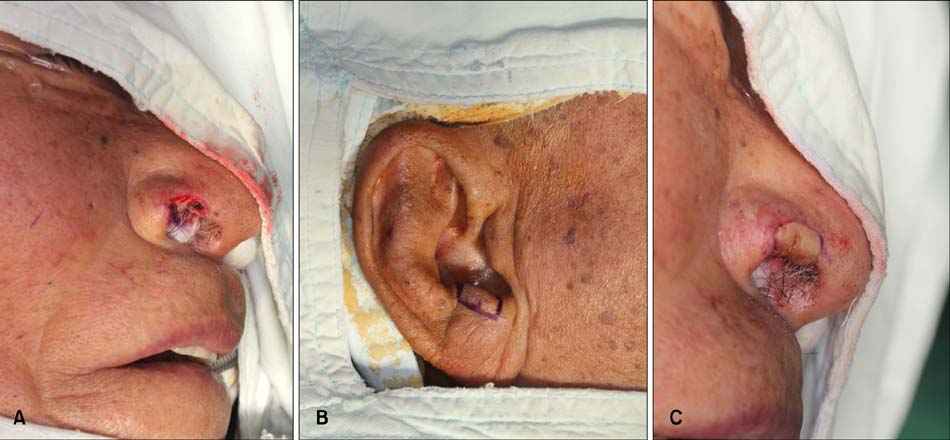Ann Dermatol.
2014 Jun;26(3):407-408.
Auricular Composite Chondrocutaneous Grafts in the Repair of Nasal Alar Rim Defects
- Affiliations
-
- 1Department of Dermatology, VHS Medical Center, Seoul, Korea. parkhjmd@medimail.co.kr
Abstract
- No abstract available.
MeSH Terms
Figure
Reference
-
1. Cherpelis BS, Carls JL. One-stage reconstruction of a full-thickness nasal defect involving the alar rim. Dermatol Surg. 2007; 33:1361–1364.
Article2. Pilanci Ö, Saçak B, Kuvat SV, Şen E, Arslan H, Aygit AC. Use of outsized composite chondrocutaneous grafts in conjunction with dermal turnover flaps for reconstruction of full-thickness alar defects. J Craniofac Surg. 2011; 22:864–867.
Article3. Hass AF, Glogau RG. Atlas of cutaneous surgery. Philadelphia: W.B. Saunders Company;1996. p. 165–168.4. Conley JJ, Vonfraenkel PH. The principle of cooling as applied to the composite graft in the nose. Plast Reconstr Surg (1946). 1956; 17:444–451.
Article5. Kindwall EP, Gottlieb LJ, Larson DL. Hyperbaric oxygen therapy in plastic surgery: a review article. Plast Reconstr Surg. 1991; 88:898–908.
- Full Text Links
- Actions
-
Cited
- CITED
-
- Close
- Share
- Similar articles
-
- A case report of the external nose reconstruction using forehead flap and auricular composite grafts
- Four Limb Shaped Auricular Chondrocutaneous Composite Graft for the Alar and the Columellar Defects
- Large Auricular Chondrocutaneous Composite Graft for Nasal Alar and Columellar Reconstruction
- Restoration of Deformed Ala Caused by Cosmetic Alar Reduction: A Case Report
- Diagnosis and Treatment of Alar Rim Deformities



